By Shobha Rao Smilemaker
The. drive up the mountains with unending rows of olive trees or cork trees around us transported us to different kind of world altogether! Our first stop was at a 17th century family run Molino El Vinculo oil factory. It was interesting to see the whole process of how the olive fruit would be converted to olive oil through the cold pressed extraction method.
We then went to the white village of Zahara dela Sierra with icy cold winds for company. In ancient times the external walls were coated with white limestone as an antiseptic and also to keep the houses cool, and this white colour is seen even today.
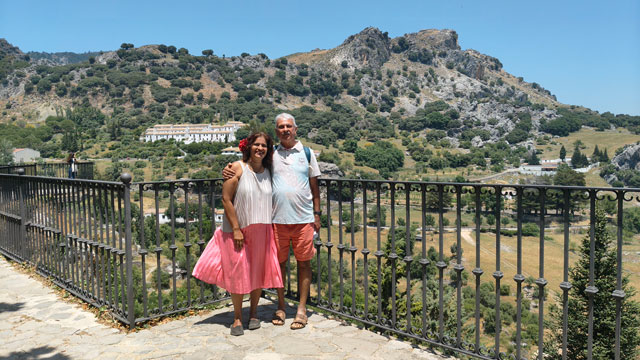
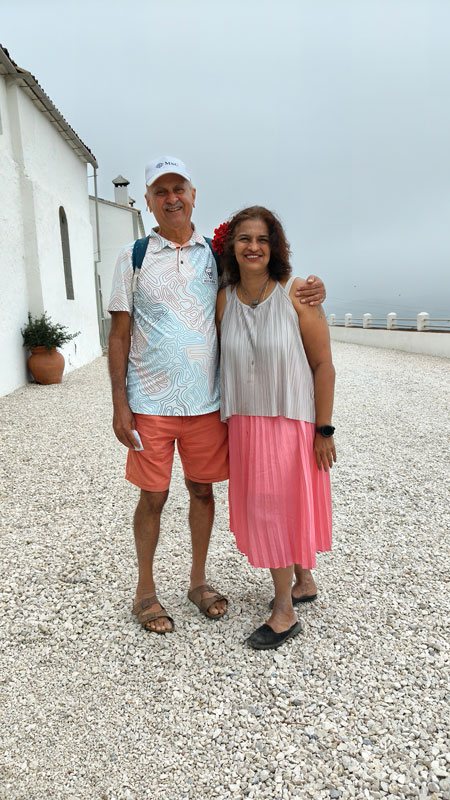
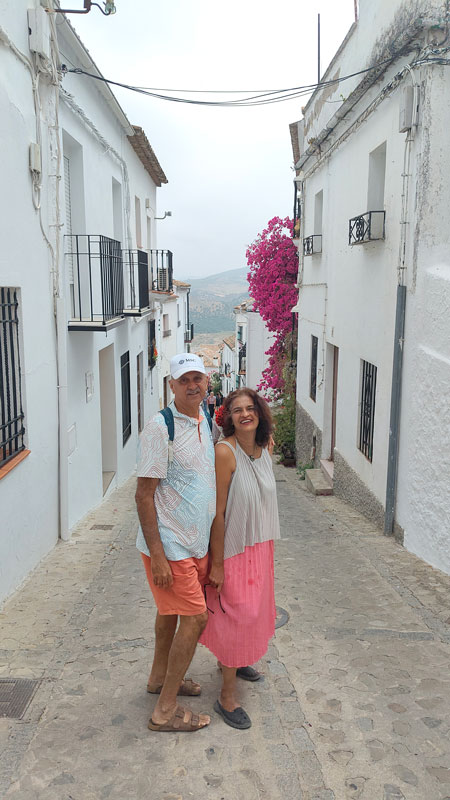
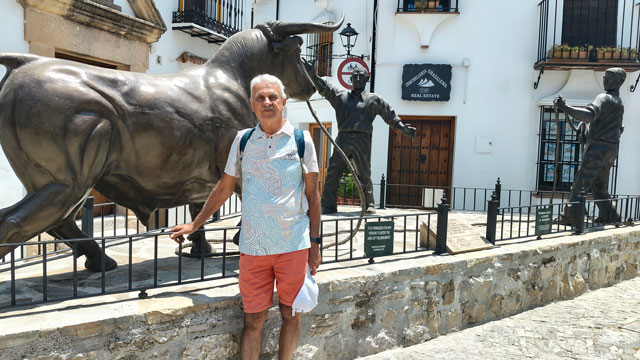
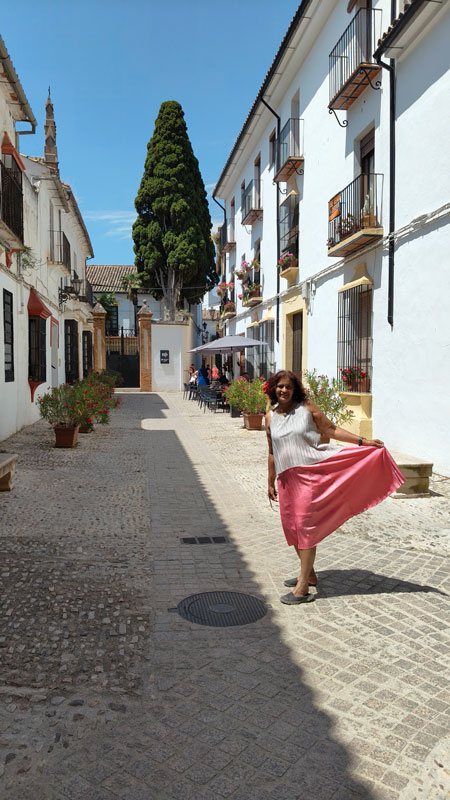
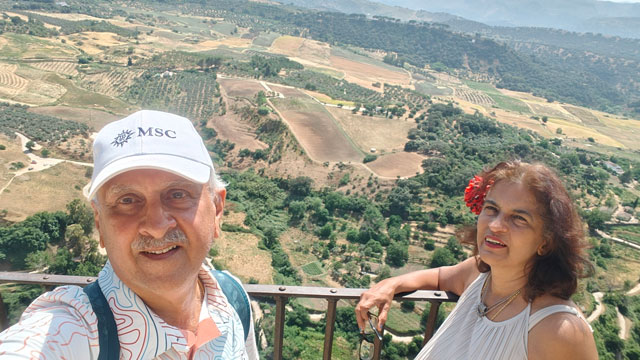
This tiwn was founded during the era of the 14th century Nazreen kingdom, called Al Suleimani that time, mainly for the families of soldiers of the Nasreen rulers to stay here. It had the natural protection of mountain. When invaders came, the locals would abandon the houses and stay in the nearby caves.
From the viewpoint, we could see the El Gastora dam and the lake in the distance.
Tourists usually come hiking at the nearby Sierra de Grazalema Natural Park and also to try out the local organic food of
lamb, beef, etc. I preferred to eat my packed vegetarian food at the quaint town square, watching the council members address the local people something in the Spanish Language.
There was an interesting steel sculpture representing the bull run festival where bulls would go around town in any direction. The streets had fences such that the men could pass through, but the bulls could not. The local breed of aggresive brave bulls is used to chase people at festivals or in the organized bull fighting events.
Rhonda
Imagine an era when safety against invaders was the utmost priority. The strategic location of Rhonda in Spanish Malaga province, set on a rock platform right above the deep EL Tajo gorge between the Andulesian mountains and the Guadalevín river made it difficult to access and so Rhonda was an Important military point since the 14th century.
The first sight that auught my eye was the 17th century huge round shaped building the Plaza de Toros, that is still used as a bull fight ring during the annual season in September.
We walked lots and admired from afar, the architectural feat of the 18th century Puenti Nuevo stone bridge, which seperates Rhonda into the old town (La Ciudad), and the new town (El Mercadillo).
We walked on the cobbled streets between quaint old building, imaging how this place must have been during the Moorish rule with Arab baths, places and more. We walked upto the tree lined shopping promenade. Every corner of this city located on the edge of a cliff, had amazing panoramic views of the majestic mountains around us
We shopped for souvenirs and some caramelized sunflower seeds at the Calle La Bola, the main pedestrian street.
We ended our walk at the Alameda del Tajo, public park which had 2 bronze statues -the Monument to the Goyaesque Lady dressing traditional Rhonda attire and the Statue of Pedro Romero a famous bullfighter. We were thrilled when a musician at the gazebo, played the tunes of Hindi songs when he saw us!
The day spent amidst the white buildings on the mountains of Andulasia would remain as an eternal memory of my visit to the South of Spain.

Shobha Rao Smilemaker has a vision of living in a world where people use their ability to find and make smiles in any situation. She is a lawyer by qualification, a soft skills trainer by passion, a motivational speaker, a freelance journalist, a bestselling author, an avid traveler and founder of 'Smilemakers Trainings'. She can be contacted at www.shobhasmilemaker.com.